Specific differences between singlemode fiber and multimode fiber

1)By Optical connector:
LC fiber patch cable; FC patch cable; SC fiber cable; ST patch cable; MU fiber patch cable; MTRJ patch cord; E2000 patch cable; MPO fiber cable.
2)By fiber optic cable types
Single mode fiber optic cable: Generally in yellow color and useful for long transmission distance;
Multimode fiber optic cable: Generally the multimode patch cable are orange or gray and therefore are used for short distance transmission.
3)By fiber optic cable Jacket
PVC: Non-Flame Retardant;
LSZH : Low smoke zero halogen, Flame Retardant
- Fiber optic connector type: LC, FC, SC, ST, MU, MTRJ, E2000,MPO
- Ferrule Interface type: PC, UPC, APC
- Fiber cores: Simplex, duplex, 4 fibers, 8 fibers etc.
- Fiber type: Single mode (G.652, G655), multimode(50/125)/(62.5/125)
- 100% Insertion Return Loss, End Face and Interference inspection
- Low insertion loss, high return loss
- Excellent mechanical endurance
- Insertion loss: <0.5 dB
- Operation temperature: -20?? to 85??C
- 10G OM3 OM4 fiber cable available
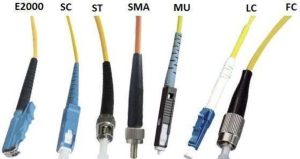
According to the different modulus of the transmission point, optical fiber can be divided into single-mode fiber and multimode fiber.
The so-called “mode” refers to a beam of light entering the optical fiber at a certain angular speed. Single-mode fiber uses solid-state laser as the light source, and multimode fiber uses light-emitting diode as the light source. Multimode fibers allow multiple beams of light to travel simultaneously in the fiber, resulting in mode dispersion (because each “mode” light enters the fiber at a different angle and they arrive at the other endpoint at a different time, a feature called mode dispersion).
Therefore, the core of multimode fiber is thick, the transmission speed is low, the distance is short, and the overall transmission performance is poor, but its cost is relatively low, and it is generally used in buildings or geographically adjacent environments. Single-mode fiber can only allow a beam of light propagation, so single-mode fiber has no mode dispersion characteristics, therefore, the core of single-mode fiber is correspondingly thinner, transmission frequency bandwidth, large capacity, long transmission distance, but because it requires a laser source, the cost is higher.
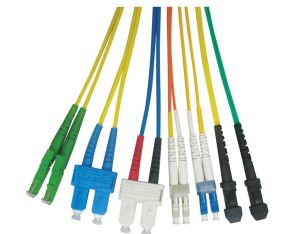
Multimode fiber The optical signal in multimode fiber propagates through multiple paths; It is generally recommended to apply when the distance is less than a mile.
The effective distance from the transmitter to the receiver of multimode fiber is approximately 5 miles. The available follow-up is also affected by the type and quality of the transmit/receive device; The stronger the light source, the more sensitive the receiver and the farther the distance. Studies have shown that the bandwidth of multimode fiber is approximately 4000Mb/s。
Single-mode fiber is manufactured to eliminate pulse broadening. Due to the small core size (7-9 microns), light jumps are eliminated. Focused laser sources are used at 1310 and 1550nm wavelengths. These lasers shine directly into the tiny core and propagate to the receiver without noticeable jumps. If multimode can be compared to hunting, and many projectiles can be loaded into the barrel of a gun at the same time, then single-mode is a rifle, and a single light is like a bullet.
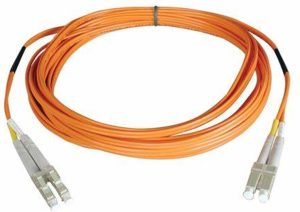
Single-mode fiber The thinning core of single-mode fiber allows light to be emitted directly to the center. Recommended for longer distances.
In addition, the distance loss of a single-mode signal is smaller than that of multimode. At the first 3000 feet, multimode fiber can be lost. Its LED has 50% of its optical signal strength, while singlemode loses only 6.25% of its laser signal at the same distance.
The bandwidth potential of singlemode makes it the only choice for high-speed and long-distance data transmission. Recent tests have shown that 64 channels of 40G Ethernet can be transmitted over a distance of up to 2,840 miles on a single-mode optical cable.
In safety applications, the most common deciding factor in choosing whether to be multimode or singlemode is distance. If there are only children’s miles, multimode is preferred because LED transmitters/receivers are much cheaper than the lasers required for singlemode. Single-mode fiber is best if the distance is greater than 5 miles. Another issue to consider is bandwidth; If future applications may include the transmission of large bandwidth data signals, then single-mode would be the best choice.
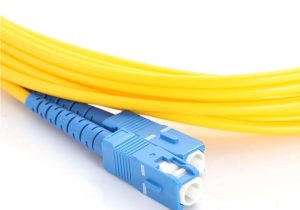
By transmission mode
According to the transmission mode of light in the optical fiber, it can be divided into: single-mode fiber and multimode fiber.
The core diameter of multimode fiber is 50~62.5μm, the outer diameter of the cladding is 125μm, and the core diameter of single-mode fiber is 8.3 μm, and the outer diameter of the cladding is 125μm. Optical fibers operate at short wavelengths of 0.85 μm, long wavelengths of 1.31 μm and 1.55 μm. Fiber loss generally decreases with the length of wavelength, 0.85μm loss is 2.5dB/km, 1.31μm loss is 0.35dB/km, 1.55μm loss is 0.20dB/km, which is the lowest loss of optical fiber, wavelength above 1.65μm loss tends to increase. Due to the absorption of OHˉ, there are loss peaks in the range of 0.90~1.30μm and 1.34~1.52μm, and these two ranges are not fully utilized. Since the 80s, there has been a tendency to use more single-mode fiber, and the long wavelength of 1.31μm is used first.
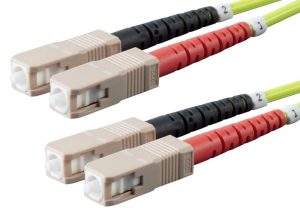
Multimode Fiber Multimode Fiber: The center glass core is thick (50 or 62.5μm) and can transmit multiple modes of light. However, the dispersion between modes is large, which limits the frequency of transmitting digital signals, and will be more serious with the increase of distance. For example, a 600MB/KM fiber only has 300MB of bandwidth at 2KM. Therefore, the distance transmitted by multimode optical fiber is relatively close, generally only a few kilometers.
Single Mode Fiber: The center glass core is very thin (core diameter is generally 9 or 10 μm) and can only transmit one mode of light. Therefore, its inter-mode dispersion is very small, suitable for long-distance communication, but there are still material dispersion and waveguide dispersion, so that single-mode optical fiber has high requirements for the spectral width and stability of the light source, that is, the spectral width should be narrow and the stability should be good. It was later found that at a wavelength of 1.31 μm, the material dispersion and waveguide dispersion of single-mode fiber are either positive and one negative, and the magnitude is exactly the same. This means that at a wavelength of 1.31μm, the total dispersion of single-mode fiber is zero. From the perspective of the loss characteristics of the fiber, 1.31μm is exactly a low-loss window of the fiber. In this way, the 1.31μm wavelength region has become an ideal working window for optical fiber communication, and it is also the main working band of the practical optical fiber communication system. The main parameters of 1.31μm conventional single-mode fiber are determined by the International Telecommunication Union ITU-T in the G652 recommendation, so this fiber is also known as G652 fiber.
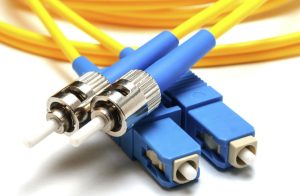
Single-mode fiber can only transmit one mode, while multimode fiber can transmit multiple modes, because multimode fiber has serious mode dispersion, so the transmission distance is not very long. Single-mode fiber can transmit more than 4000 meters. Multimode fiber, on the other hand, can only transmit more than 1000-2000 meters. Now the technology has been greatly improved, and various special optical fibers have also begun to be used.
Single-mode fiber supports single-fiber transceiver, and its implementation is that one end uses a wavelength of 1500 and a wavelength of 1300, while the other end is opposite, using a wavelength of 1500 and a wavelength of 1300 at one end. Some people call this duplex. In fact, this is not accurate, it should be called multiplexing.
Multimode fiber only supports dual-fiber transceiving, because multimode is transmitted by refraction, and two wavelengths cannot be transmitted in different directions on the fiber. Only one wavelength can be used, so it cannot be multiplexed.
- Single-mode fiber core diameter is small (about 10m m), only allows one mode transmission, small dispersion, works at long wavelengths (1310nm and 1550nm), and the coupling with optical devices is relatively difficult
- Multimode fiber has a large core diameter (62.5m or 50m), allowing hundreds of modes of transmission, large dispersion, working at 850nm or 1310nm. Coupling to optical components is relatively easy
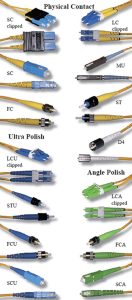
For optical modules, strictly speaking, there is no single-mode and multi-mode. The so-called single-mode and multi-mode modules refer to the optical devices used in the optical terminal module and what kind of optical fiber can cooperate with the best transmission characteristics.
Singlemode fiber and multimode fiber can be easily distinguished from the size of the core. The core of single-mode fiber is very small, about 4~10um, and only transmits the main mode. This completely avoids modal dispersion, resulting in a wide transmission band and a large transmission capacity. This optical fiber is suitable for large-capacity, long-distance optical fiber communication. It is an inevitable trend in the development of optical fiber communication and light wave technology in the future.
Multimode fiber is divided into multimode mutation fiber and multimode gradient fiber. The former has a larger core diameter and more transmission modes, so the bandwidth is narrower and the transmission capacity is small; The refractive index in the latter core decreases with the increase of radius, and a relatively small modal dispersion can be obtained, so the frequency band is wider and the transmission capacity is large, and the latter is generally used at present.
In the theory of optical fiber communication, optical fiber is divided into single-mode and multi-mode, the difference is:
- Single-mode fiber core diameter is small (about 10m m), only one mode transmission is allowed, dispersion is small, working at long wavelengths (1310nm and 1550nm), and the coupling with optical devices is relatively difficult.
- Multimode fiber has a large core diameter (62.5m or 50m), allowing hundreds of modes of transmission, large dispersion, working at 850nm or 1310nm. Coupling to optical components is relatively easy.
For optical modules, strictly speaking, there is no single-mode and multi-mode. The so-called single-mode and multi-mode modules refer to the optical devices used in the optical terminal module and which optical fiber can obtain the best transmission characteristics.


